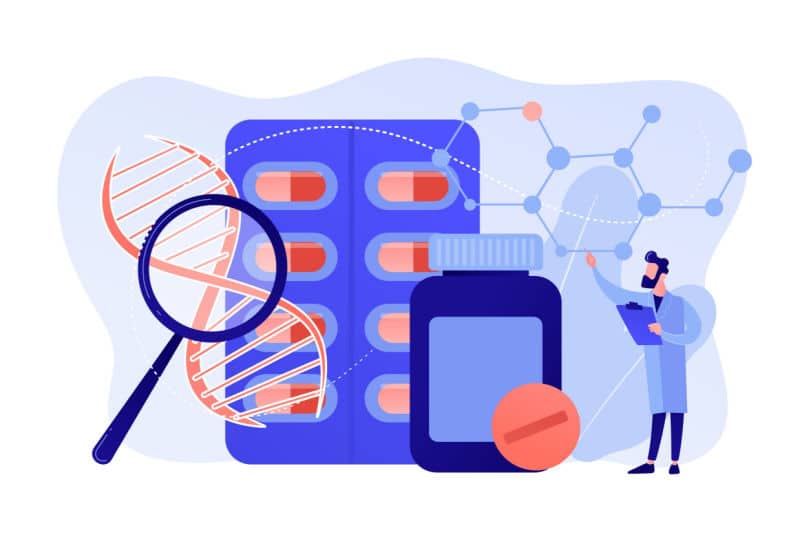With increasingly complex therapeutics arriving almost monthly, efficient technology transfer between biopharma and manufacturers is more important than ever. Ken Forman, senior director of product strategy at IDBS, explains how good digital strategies can avoid common pitfalls in the tech transfer process.
Biopharmaceutical lifecycle management (BPLM) is the key to delivering novel therapies and lifesaving drugs to the world. It encapsulates every stage of drug development, including drug candidate identification, clinical trials establishing efficacy, manufacturing processes and supply chain activities for delivering these therapies to patients.
Each of these vertical pipeline activities typically lives in separate parts of an organization, with specialists, equipment and digital tools customized for those needs. Technology transfer is the process that bridges the gaps between these different parts for the transfer of information about development, manufacturing and quality assurance.
Nevertheless, even the most well-established biotechnology companies are challenged when it comes to implementing tech transfer successfully. While some modalities, such as monoclonal antibodies and small molecules, lend themselves to a platform approach, others such as cell and gene therapies are relatively new to the industry and the complexity and variability of these newer therapeutics continue to add pressure to an already brittle process.
Tech transfer is a complex activity involving multiple parties in the supply chain, each adding its own challenges to the equation. Biopharmaceutical sponsors own the project management of the entire affair, balancing the establishment of the supply chain with their aggressive scheduling demands to accelerate delivery to the market.
Downstream recipients of the technology have their own unique challenges as well. Several manufacturers have spoken about receiving complex tech transfer requirements without clear and concise instructions. The lack of clear directions risks compromising product quality and often damages the partnership in the long term.

The importance of tech transfer in CMO partnerships
Establishing the supply chain occurs early in the tech transfer process when selecting the best fit manufacturing facility. This includes analysis of a manufacturer’s facility design, their own analytical and process controls, as well as equipment availability and qualification.
When selecting a third-party CMO, the company should also evaluate the CMO’s willingness to use digital data-sharing platforms. A manufacturer supplying batch data in Excel files or on paper can hinder production and monitoring, leading to delays in batch release.
Tools are commercially available today to support collaboration around the digital sharing of recipes, Certificate of Analysis and batch data. With the help of these tools, process information management systems (PIMS) can transform tech transfer from a static activity to dynamic, persistent and compliant knowledge sharing.
Moving from a control strategy to a fully Good Practice-compliant Continued Process Verification program can be achieved with less time, cost and risk using PIMS versus more complex programs involving paper, spreadsheets and disparate systems.
The need for broader tech transfer solutions
To be successful, tech transfer solutions for healthy CMO partnerships must be even more comprehensive than the aforementioned solutions.
A recent conversation with the director of global manufacturing for an industry-leading CMO suggests that the overarching barrier to tackling the segregation between BPLM stages is the lack of a commercially available tech transfer solution that encapsulates all parts of the process, not just the final manufacturing stage. This need becomes even more essential in biopharmaceutical scale-up procedures for the mass production of novel therapies. More specifically, there are also raw materials providers to select, time requirements to consider and analytical testing procedures to agree to, all of which require standard operating procedures to be put in place.
Some vendors solve a few of the challenges separately, but several BPLM activities still have no off-the-shelf solution. As a result, many companies purchase “point solutions” that aren’t designed to integrate with each other. Dedicated on-premise software solutions introduce further technological hurdles, such as sharing data across firewalls with cloud solutions, IT having to adapt new proprietary protocols and tedious integration with standalone equipment.
The solution is to use an integrative data backbone that simplifies the management, movement and exchange of data between the various tools.
Some believe that standards are key to solving the problem. ISA-88 for batch control is an example of a standard for industrial processes adopted by many biopharma companies. However, the actual implementation of the standard can vary a lot, making digital integrations harder than originally anticipated.
An example is the ability to easily share recipe information. Today, this is still done with control strategies being shared via lengthy Word documents. Most companies include all of the S88 components, but the actual format of the finished documents vary across different drug sponsors. This results in the CMO having to map all control strategies to manufacturing processes for every new customer they take on.
As more vendors implement S88-compliant tools, the variations and gradients in this approach will likely be addressed through company mergers, acquisitions and partnerships.

Other issues requiring comprehensive tech transfer solutions
The other two important challenges are a lack of common terminology for processes and a lack of transparency in data sharing.
Over the last decade, many pharmaceutical companies have undertaken internal “harmonization” projects to standardize the use of common terms for procedures and systems by their employees. However, discrepancies can arise from organic growth as new sites are set up worldwide, developing their own internal procedures, especially when manufacturing new products.
Therefore, there is a growing concern about the lack of foresight around data exchange to improve business and manufacturing processes. This bottleneck is likely to be exacerbated as large biopharma continues to shift from organic growth to growth through acquisition. Many large pharmaceutical companies inherit this problem upon acquiring smaller companies, so the longer they wait to address data exchange, the more disruption it causes.
The lack of common terminology for parameter naming leads to issues ranging from simple confusion between process engineers discussing procedures to more serious discrepancies between in-process control data supplied from two different sites, which use different parameters for quality comparison. This can lead to poor batch release decisions and even FDA “Form 483” write-ups around data integrity.
Digital data sharing also needs to be emphasized early in the tech transfer process, especially when forming new partnerships. As mentioned before, the participation of a new partner in digital data sharing may require a culture shift in the entire supply chain, as the partner may need new tools and training, as well as proper contractual agreements to ensure continued compliance from both sides.
One major issue that larger drug companies struggle with is the assumption that the suppliers will give them access to their systems upon demand. However, they often forget that those suppliers also store data for other customers in their database. For example, a Laboratory Information Management System (LIMS) holds analytical test results for all products the CMO manufactures. Therefore, the manufacturer refrains from providing LIMS access to any single customer to protect the privacy of the other customers.
There are several ways to get around this problem, but it takes extra time to develop and validate new tools and procedures, whether provided by a vendor or developed in-house. In both cases, it is critical to involve the IT department from the start, as the security of data is crucial, and firewalls can require sophisticated networking for data exchange.
Overall, as biopharma companies assess their digital maturity in BPLM tech transfer capabilities, they should identify critical bottlenecks leading to cost overruns and/or delayed manufacturing readiness.
They should build a map of the tools they already have and identify if these tools suffice to meet their business goals. If not, they need to investigate the tools provided by the industry while also seeking out partners that can help close the gaps.
As manufacturing tech transfer solutions continue to evolve, BPLM digital transformation will pave the way for higher quality and faster delivery of therapies to reach patients.
Ken Forman has over 28 years of experience and expertise in IT, operations, and product & project management focused in the software and pharmaceutical space. Prior to joining Skyland Analytics, Ken served as director, project management, NAM at Biovia Dassault Systemes and held multiple director positions at Aegis Analytical. Previously, he was director of IT at Rally Software Development, director of commercial operations at Fischer Imaging and director of IT at Allos Therapeutics and Genomica.





